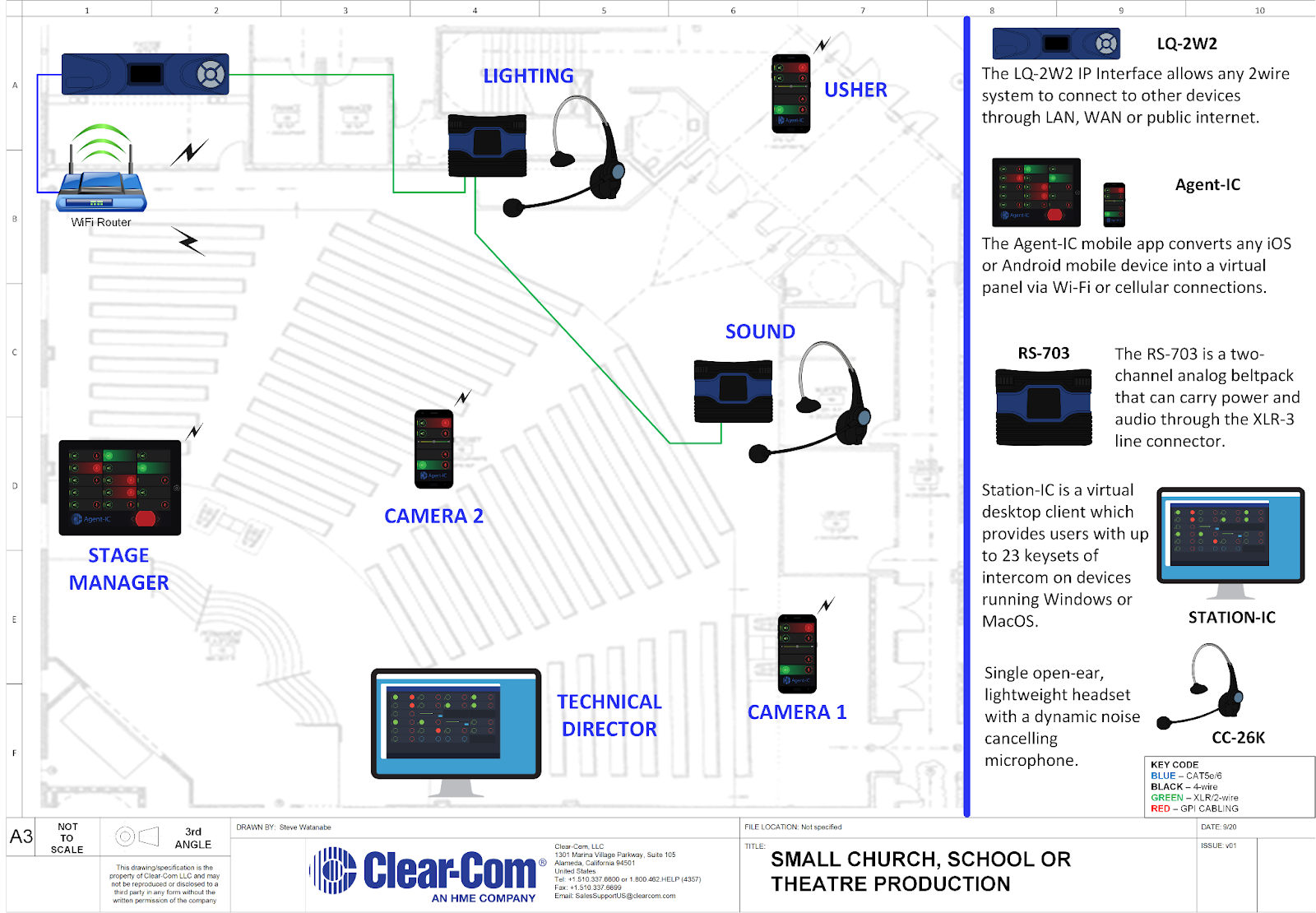Hands down, one of the most important aspects of any successful live-production service is Communication. A service can derail quickly if team members cannot accurately communicate with each other - regardless of how much time has been spent preparing, rehearsing and checking content.
But when the music is up and the lights are low, how do you ensure that everyone can communicate? Intercom. In our opinion, Intercom is the unsung hero of the production world. It is utilized by everyone and appreciated publicly by few. Like a mouse and keyboard or faders on an audio console, an intercom headset becomes an extension of yourself during service.
At its core, the intercom provides a basic functionality: Give team members a discrete way to communicate directly with each other. A good intercom system allows team members to hear each other when it’s loud, and still communicate quietly during intimate moments without disrupting the service.
Intercom Basics:
Intercom systems utilize belt packs and headsets. The belt pack is the heartbeat of the operation. They are small boxes that connect back to the Main Station (the brain) that provides power and signal distribution. Beltpacks can be wired or wireless. Headsets are worn by the operators in order to listen and talk with the rest of the team. Headsets can be over-ear, on-ear or in-ear. They can be single-ear or double-ear. Headsets have a microphone built-in as well. In some models, the microphone “arm” mutes automatically when raised instead of relying on the operator to mute or unmute the microphone on the belt pack. As you can see, there are a number of configurations, so you can choose exactly what you want at each position.
Our friends at Clear-Com illustrate how many churches implement intercoms in order to get information quickly and discreetly to individuals around the Sanctuary.

So why is Intercom important? What should you look for in an intercom system?
Intercom systems are built around the idea of Channels. A single-channel intercom system means that everyone talks and listens on a single channel. This is great to get information to everyone quickly, but with larger teams, this can create challenges when multiple people are trying to convey information simultaneously. Multi-channel systems allow you to split communication across multiple paths - generally with a Service Producer at a Main Station that has access to listen and talk on every channel. On a two-channel system, you may group the Audio and Lighting Teams together and keep the Video Team on a separate channel since they will provide near-constant communication with camera operators. On larger four-channel systems, camera operators and the individual calling camera shots at the video switcher might live on their own separate channel. Ultimately, the goal would be to group individuals that need to hear similar information onto their own channels.
As a side benefit, most intercom systems allow you to push a Page/Call button. This button triggers all of the other intercom belt packs on that specific channel to illuminate a Push/Call button. This button flashes to serve as a visual indicator to get the attention of operators that may not be wearing a headset.
Now that everyone can communicate with each other on Intercom, it’s equally important to maintain proper communication etiquette. Check out our next article about how, what, and when to communicate on Intercom.
If your team is struggling to communicate effectively during service, an Intercom system might be the solution. Contact Us to get information on integrating Intercom into your system.